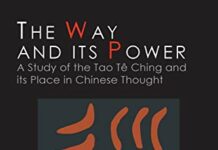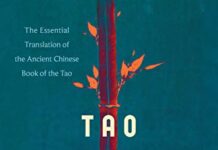
Ebook Info
- Published: 2012
- Number of pages: 210 pages
- Format: PDF
- File Size: 9.87 MB
- Authors: Lao Tzu
Description
“A refreshing new translation. . . . Highly recommended.”—Library Journal“With its clarity and scholarly range, this version of the Taoteching works as both a readable text and a valuable resource of Taoist interpretation.”—Publishers Weekly“Read it in confidence that it comes as close as possible to expressing the Chinese text in English.”—Victor Mair, professor of Chinese studies, University of PennsylvaniaLao-tzu’s Taoteching is an essential volume of world literature, and Red Pine’s nuanced and authoritative English translation—reissued and published with the Chinese text en face—is one of the best-selling versions. What sets this volume apart from other translations are its commentaries by scores of Taoist scholars, poets, monks, recluses, adepts, and emperors spanning more than two thousand years. “I envisioned this book,” Red Pine notes in his introduction, “as a discussion between Lao-tzu and a group of people who have thought deeply about his text.”Sages have no mind of their owntheir mind is the mind of the peopleto the good they are goodto the bad they are gooduntil they become goodto the true they are trueto the false they are trueuntil they become true . . .Lao-tzu (ca. 600 BCE) was a Chinese sage who Confucius called “a dragon among men.” He served as Keeper of the Royal Archives and authored the Taoteching.Red Pine is one of the world’s foremost translators of Chinese literary and religious texts.
User’s Reviews
Reviews from Amazon users which were colected at the time this book was published on the website:
⭐Because Lao-Tzu’s Taoteching eludes the discursive mind, reviewing it seems impossible. Even so, I would like to touch on a few subtle points.In his translation, Red Pine provides extensive commentaries from many sages throughout history following each section. As a result, I was able to read with more nuance.According to Red Pine, Lao Tzu was inspired by the new moon, which “can always become light and contains within itself the potential for growth and long life”. A person can embody Te (“virtue”) through wu-wei (“non-doing”), which involves being humble, soft, pliable, and not imposing, while being free of expectations, likes, and dislikes. Te is the manifestation of Tao; all things are united by the Tao, the universal principle that is in fact no principle. Te is not necessarily about prioritizing kindness over cruelty, but rather about the perfect stillness and balance that is the essence of Tao. As a result of embodying Te, the sage aligns himself with the Tao, which is also referred to as The Way.In order to cultivate the Tao, a sage must stand aloof from the world and be devoid of concerns, letting things take care of themselves. In the midst of opposites transforming into one another, sages avoid extremes, excesses, and extravagances. The sage transcends the boundaries of life and death, existence and non-existence by cultivating the Tao’s nameless simplicity. To achieve immortality, Lao Tzu encourages man to go back to nothing, to the dark and unfathomable yin, not the bright and perceptible yang.In my opinion, the ending of Zerkalo, the film directed by Andrei Tarkovsky, captures the essence of the Tao in a beautiful way. The following is something I wrote years ago about it:”Let’s say you’re lying on bed and your memory resurfaces, and you dream of all your loved ones, your regrets, and etc. You also get many people and their roles confused (since retrieval of memory is not perfect). You start getting sad and feeling remorseful, beating yourself over many events that have happened in your life (“ he said this! she said that!, “why couldn’t you have…”), and etc. Your dreams start overtaking you, but at the end you simultaneously accept and nullify yourself when you let go of the bird in your hand, and it flies to the wide expansive field.”
⭐The “Tao Te Ching” (roughly “The Classic of the Way and Virtue”) was written by a shadowy figure now known as Lao-tzu, “the Old Master.” His writings outline a way of being in which the practitioner ceases to exert his or her will over the world, simply “going with the flow” of things as they naturally arise. Lao-tzu himself seems to have done quite a good job of this, effacing himself so thoroughly that we no longer know even his real name, but his text, in its quiet way, has endured for thousands of years.Red Pine has been a sensitive translator of a great many spiritual classics from the Chinese and Indian traditions, but with this “Tao” he outdoes himself. He created a new recension of the text based on recently-discovered scrolls, and his translation is founded on this work. Let us be clear: editing the text in this manner is a process in which all translators of ancient works must to some extent take part. The best textual critics look at the whole scope of the work, take in as many variations as possible, and then select the bit of text that seems most well-attested or most in line with the intent of the author. It does not mean the translator merely looks for variants that support his beliefs or agenda, although (lamentably) this sometimes happens. Thankfully, Red Pine does not do this. He has clearly engaged deeply with the text, and he makes his choices based on a reflective understanding of Lao-tzu’s philosophy.After textual reconstruction, of course, comes the even more complex act of translating the text into another language. Many translators play free with the text to some degree; they insert ideas, explanations, and other tidbits they feel clarify or “communicate” the text. Red Pine has by necessity made some such choices at the stage of recension, but there such tinkering all but stops. His English version is spare–not elliptical, but neither embellished–and hews extremely close to his Chinese text. It can hardly be emphasized enough that Red Pine has brought the text into English about as directly as seems possible.If the translation alone were printed in a booklet and distributed, it would be a gift. But in this edition Red Pine has given us much more. The book itself is attractively designed: a pleasant size; text clear and readable. Each page includes Red Pine’s Chinese text alongside the English translation, which is extremely useful if you happen to read Chinese and quite pretty even if you don’t. Finally, each chapter is accompanied by extracts from several commentaries. The selection of writers covers numerous traditions and centuries of Chinese thought, and can help readers absorb a difficult verse, or perhaps find their own insights. There is also a comment from Red Pine, sometimes with a short thought on the chapter, or giving his rationale for choosing a particular textual variant. Each chapter is presented on facing pages, with commentary never running onto the next verso. This allows the commentaries to inform and stimulate without becoming exhausting or pedantic.The Tao Te Ching is like a mountain, and every translator like a guide. Red Pine is sure-footed; he points out the great features of the thing but never forces it on us. We are left to contemplate its grandeur and harrow its mysteries largely for ourselves. No doubt translations of the Tao will continue to be made, but after this book you may never need them.~
⭐This is a wonderful translation of Lao Tzu’s Tao Te ching, I have a collection of translations of this great teaching, but Red Pines Translation far surpasses the others, the reason is, this translation is so much more understandable especially for western beginners into Taoism, if you want an up to date translation, with commentary, this is the book, highly recommended.
⭐This translation really seems to more clearly and directly convey the meaning of the original text than older or more traditional translations. It has each chapter with commentary from different commentators, some of which are very salient and some don’t quite hit the mark. Ideally you would want verbal explanations from a meditation master to augment the text, but red pine has done a good job.
⭐I’ve read a few translation of the Tao Te Jing, this is by far the best.The commentary at the end of each verse is both explanatory and enlightening.I’ve already started re-reading it!
⭐I’d say Red Pine’s translation of the Tao Te Ching is above average, sometimes quite poetic. He sees the Tao as being related to the moon and this puts a different slant on some verses. Red Pine’s book is unique as he has collected quotes and opinions for every verse, many of them from ancient Chinese scholars, and presented them with the text. This gives a better insight into Lao Tzu’s verse. The original Chinese characters are shown next to his translation – a nice touch. Red Pine also explains some of his choices in translation. Great translation – really nice book! Highly recommended fro those interested in the Tao Te Ching.
⭐This is another great work translated by Red Pine. I’m amazed by what Red Pine did. This book not only have English and Chinese texts side by side. It provide commentaries from Buddhism and Confucianism’s point of view. If you are to keep one book in your library, I would say this one book is enough.
Keywords
Free Download Lao-tzu’s Taoteching: With Selected Commentaries from the Past 2,000 Years in PDF format
Lao-tzu’s Taoteching: With Selected Commentaries from the Past 2,000 Years PDF Free Download
Download Lao-tzu’s Taoteching: With Selected Commentaries from the Past 2,000 Years 2012 PDF Free
Lao-tzu’s Taoteching: With Selected Commentaries from the Past 2,000 Years 2012 PDF Free Download
Download Lao-tzu’s Taoteching: With Selected Commentaries from the Past 2,000 Years PDF
Free Download Ebook Lao-tzu’s Taoteching: With Selected Commentaries from the Past 2,000 Years



